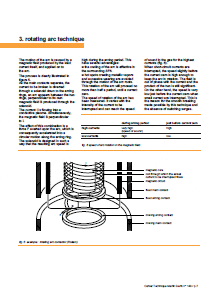Historics
Many years ago, oil circuit-breakers (OCB) and air magnetic circuitbreakers (AMB) were the main breaking techniques for MV applications. OCB, mainly in Europe, i.e. bulk oil CB and minimum oil CB, were the single technology in the catalogue of the majority of world-wide CB manufacturers.
But the qualities of AMC were very appreciated by the users in the field of the industrial distribution for 6.6 and 11 kV in Asia, Europe and 5 or 15 kV in America. With AMB, from low voltage applications to MV ones, the users did not worry about voltage surges and, mostly were unawared of the existence of such phenomena.
Thanks to the magnetic blowing, the cooling of the arc depends on the value of the breaking current, leading to a very smooth breaking.
Since 1970 or 1975 (depending on the different countries) SF6 and vacuum breaking techniques appeared on the MV market, for the primary substations firstly. The success of these new breaking techniques is well known. The advantages are:
- a longer life time, in comparison with OCB
- a better behaviour for rapid reclosing, capacitor switching etc. in comparison with OCB and AMB
- a smaller volume in comparison with AMB
To take the place of AMB for industrial application, and particulary for starting motor switching, SF6 CB is the good response, giving:
- the advantage of a smooth breaking,
- and, in comparison with AMB, the compactness.
For these reasons, Merlin Gerin has led AMB technology, after 35 years of manufacturing AMB type Solenarc, in favour of SF6 technology, which is developped and manufactured since 1970 in the MV field.
AUTHOR: Schneider Electric expert | Jacques Hennebert
| Title: | Behaviour of the SF6 – MV circuit-breakers Fluarc for switching motor starting currents |
| Format: | |
| Size: | MB |
| Pages: | |
| Download: | Right here | Video Courses | Membership | Download Updates |


